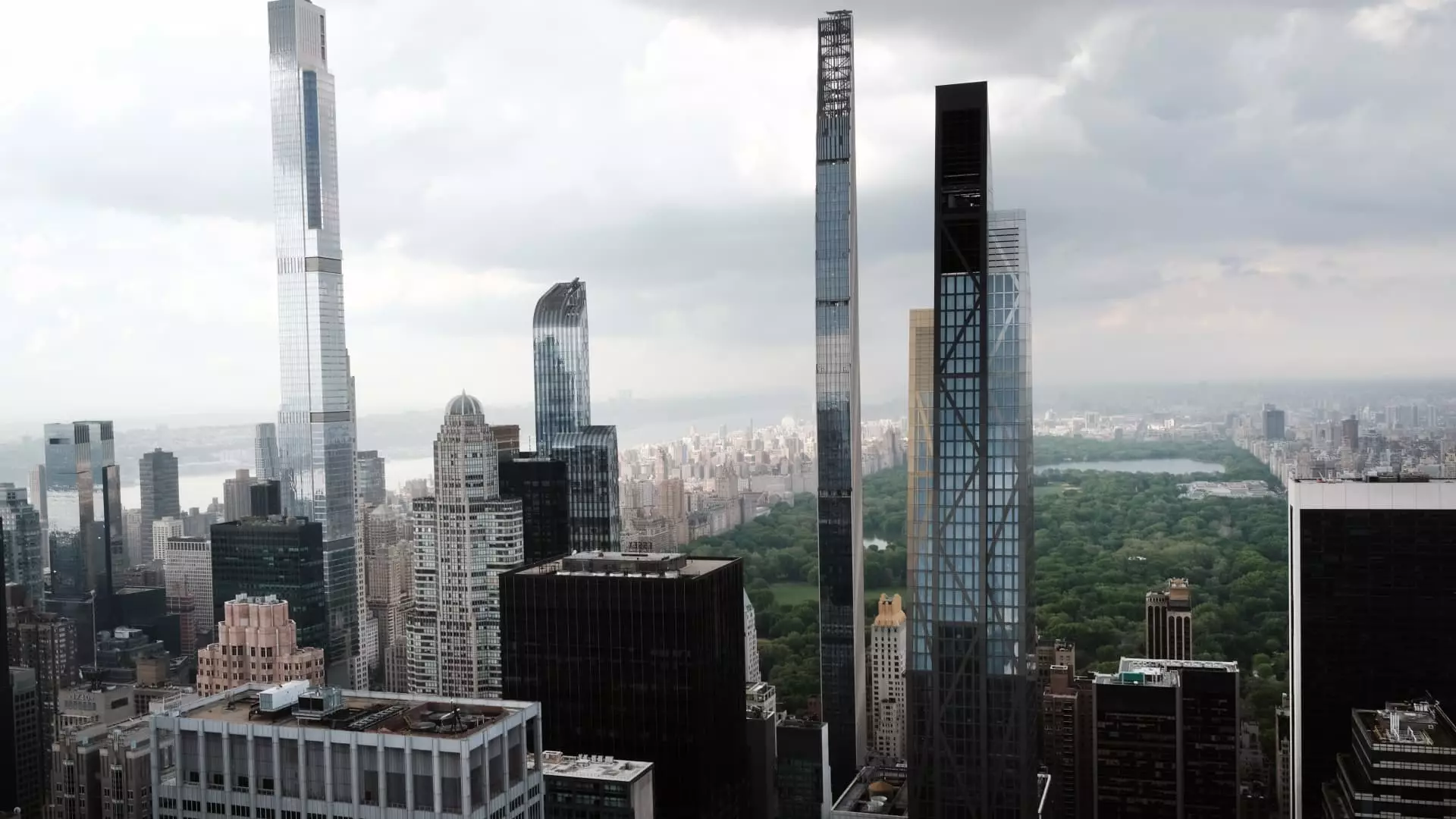The Manhattan real estate landscape has experienced a remarkable 29% surge in apartment sales during the first quarter, a glaring sign of resilience in a market often tethered to the whims of the stock exchange. As reported by Miller Samuel and Douglas Elliman, the uptick reveals a staggering increase from 1,988 closed sales last year to 2,560. What this spike suggests is not just economic recovery; it reflects a monumental shift in how the ultra-wealthy view their investments. Rather than riding the rollercoaster of volatile stocks, many affluent individuals now gravitate towards the solidity of real estate, signaling a paradigm shift in asset management and portfolio diversification.
Indeed, the overall sales figures tell an even bolder story. The total value of Manhattan apartment sales soared to an astonishing $5.7 billion, marking a staggering 56% increase from the previous year. The incredible boost in sales can be traced primarily to luxury properties, particularly those with price tags exceeding $5 million, which saw sales soar by 49%. It’s as if the wealthy are seeking refuge in real estate, using their financial power to safeguard their wealth against an uncertain economy—a behavior reminiscent of wise investment strategies utilized during economic downturns.
Cash is King: The Ultra-Wealthy Buying Paradigm
Perhaps one of the most enlightening insights from this real estate surge is the prevalence of cash transactions—58% of sales in this affluent segment were made without financing. In properties above $3 million, the percentage skyrocketed to an astonishing 90%. This trend indicates not only the purchasing power of Manhattan’s elite but also their strategic foresight, as cash transactions insulate them from the burden of rising mortgage rates. Buying in cash might typically be seen as a luxury; however, in the context of today’s unpredictable stock market, it serves as a tactical advantage.
The ultra-wealthy are indeed insulated from the challenges that plague regular buyers, not merely because of their financial might but also due to a significant cultural shift. The sustained demand for ultra-high-end properties priced at $20 million and above signifies that luxury remains untouchable. This segment of buyers appears to have recognized the contemporary trend towards investment in tangible assets, reinforcing the notion of real estate not just as a home but as a long-term hedge against inflation and market volatility.
Returning Affluence: The Boom of the “Boomerang Wealthy”
Another fascinating angle in this burgeoning market is the re-emergence of the “boomerang wealthy,” individuals who left Manhattan for other states, like Florida, during the pandemic only to return as conditions shifted. This demographic shift significantly enriches Manhattan’s residential tapestry, adding an influx of buyers looking to reclaim their status in the Big Apple. Real estate agent Charlie Attias of Compass highlights the “notable movement” of wealthy individuals relocating back from places that were once seen as havens during the pandemic, such as Los Angeles and Florida.
This influx brings not only wealth but also a certain level of prestige to the Manhattan market, enhancing its allure once more. The vibrancy of the city is rekindled by their return, which in turn can fuel further investments. As larger corporations—including major banks—reimplement back-to-office policies, the demand for luxury housing is likely to escalate, solidifying Manhattan’s status as a prime investment location.
The Generational Wealth Transfer: Redefining Buyer Profiles
Astoundingly, the trend doesn’t stop there. The ongoing “Great Wealth Transfer,” where trillions are passed from baby boomers to their descendants, complicates the dynamics of the buyer pool. Wealthy offspring acquiring properties with funds from trusts or family offices underscores not only the changing face of affluent buyers but also a powerful shift in the real estate compass. Agents like Cindy Scholz of Compass note an “increase in activity from family offices,” marking them as a prominent player in the current market climate.
The budding interest from heirs who view real estate as a long-term legacy asset shows a fundamental change in how wealth is preserved and accumulated. This shift suggests that the Manhattan real estate market is not just flourishing but evolving to meet the demands of a new generation of buyers whose financial ethics and investment strategies differ markedly from those of their parents.
Market Complexity: Beyond the Numbers
While the quarterly sales numbers paint an optimistic picture, it is essential to dissect the underlying complexities. Sales that closed recently are generally agreed upon months prior, meaning the late March instability surrounding the broader economy may not manifest until later. Nevertheless, the increased signed contracts for luxury properties, especially those above $10 million, hints at an optimistic outlook. Pamela Liebman of Corcoran aptly states that Manhattan’s market is not merely steady—it’s thriving, suggesting an overall health that may defy predictions of impending downturns.
In a city where real estate has long been a cornerstone of wealth accumulation, the latest trends reflect a nuanced understanding of asset allocation among the elite. The vibrancy of the Manhattan market is not just about sales; it’s a reflection of shifting beliefs and strategies among affluent individuals. The rich are not just weathering storms—they are recalibrating their strategies in a manner that promises new heights and sustained optimism for the future of Manhattan’s real estate.

